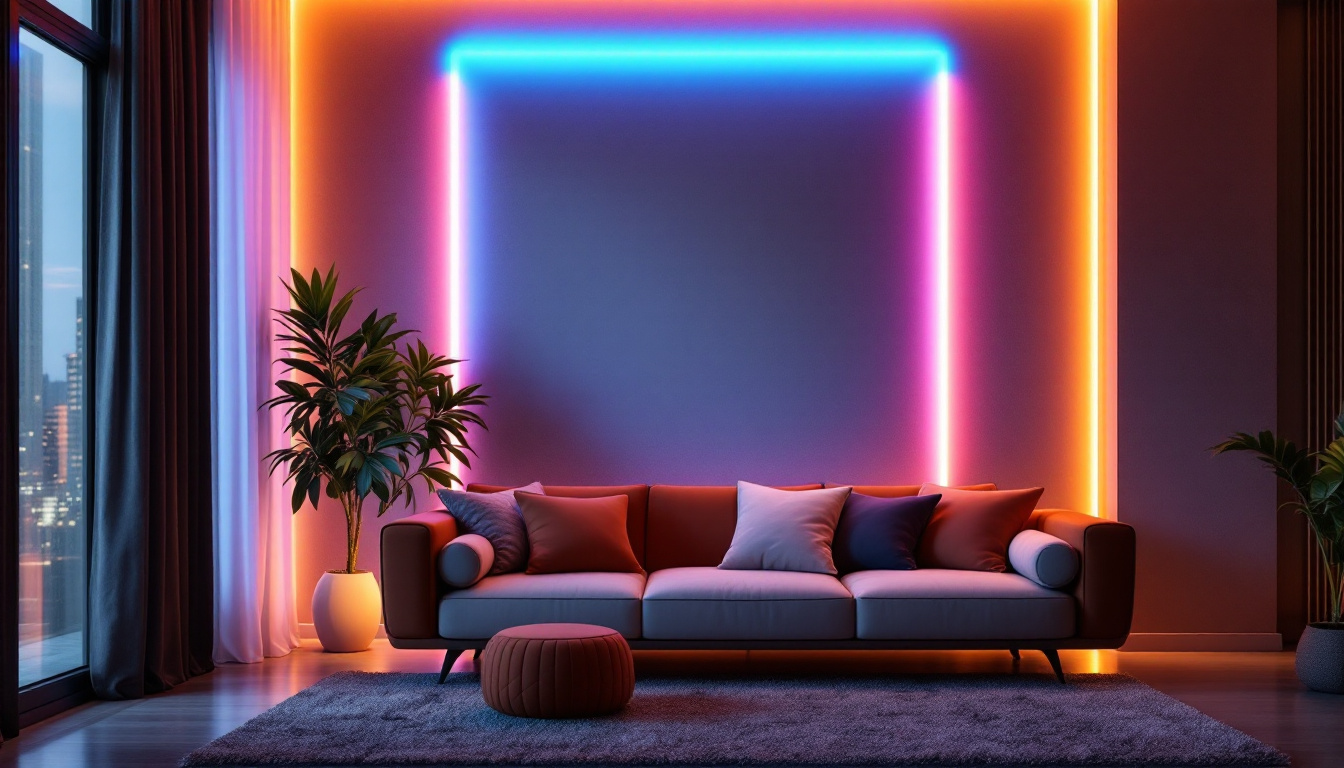
In the world of lighting design and installation, ceiling lights are a fundamental element that can dramatically influence the ambiance and functionality of a space. For lighting contractors, understanding the best practices for ceiling light installation is essential not only for ensuring customer satisfaction but also for enhancing the overall quality of work. This article explores various best practices that every lighting contractor should consider when working with ceiling lights.
Before diving into installation practices, it is crucial for lighting contractors to have a solid understanding of the different types of ceiling lights available. Each type serves unique purposes and can significantly affect the aesthetics and functionality of a room.
Ceiling lights can be broadly categorized into several types, including flush mounts, pendant lights, chandeliers, and recessed lighting. flush mount lights are ideal for spaces with low ceilings, providing a sleek and unobtrusive lighting solution. Pendant lights, on the other hand, can serve as both functional and decorative elements, often used over kitchen islands or dining tables.
Chandeliers add a touch of elegance and are commonly found in dining rooms and entryways, while recessed lighting offers a modern, minimalist look that can be strategically placed to highlight specific areas of a room. Understanding these types allows contractors to recommend the best options based on client needs and room specifications. Additionally, wall-mounted fixtures, such as sconces, can complement ceiling lights by providing layered lighting, enhancing both ambiance and functionality in a space. By combining different types of ceiling lights, contractors can create a well-balanced lighting scheme that caters to various activities and moods.
With the growing emphasis on sustainability, energy-efficient lighting solutions have become increasingly popular. Contractors should stay informed about the latest energy-efficient technologies, such as LED bulbs and smart lighting systems. These options not only reduce energy consumption but also offer longer lifespans compared to traditional incandescent bulbs.
When advising clients, it is beneficial to highlight the long-term cost savings associated with energy-efficient lighting. This not only enhances the appeal of the installation but also aligns with environmentally conscious practices. Furthermore, incorporating smart lighting systems allows homeowners to control their lighting remotely, adjust brightness levels, and even set schedules, which can lead to further energy savings. As technology continues to evolve, staying updated on the latest advancements in energy efficiency will empower contractors to provide innovative solutions that meet both aesthetic and ecological demands.
Proper planning is crucial for successful ceiling light installation. An effective layout ensures that the lighting meets the functional needs of the space while also creating an inviting atmosphere.
Each room serves a distinct purpose, and the lighting should reflect that. For instance, a kitchen may require brighter, task-oriented lighting, while a living room might benefit from softer, ambient lighting. Contractors should assess the functionality of each space and recommend a lighting plan that complements its use.
In addition to functionality, it is important to consider the room’s size and shape. Larger rooms may require multiple light sources to provide adequate illumination, while smaller spaces can often be enhanced with fewer, strategically placed fixtures. Furthermore, the color palette of the room can significantly influence how light is perceived; lighter colors tend to reflect more light, making a space feel larger and more open, while darker colors can absorb light, creating a cozier, more intimate environment.
Once the room’s functionality has been assessed, creating a detailed lighting plan is the next step. This plan should outline the types of fixtures to be used, their placement, and the overall lighting scheme. Utilizing design software can facilitate this process, allowing contractors to visualize the layout and make adjustments as needed. Additionally, considering the type of bulbs—such as LED, incandescent, or fluorescent—can affect energy efficiency and the quality of light produced, further enhancing the overall design.
Incorporating dimmers and smart controls into the lighting plan can also enhance flexibility, allowing clients to adjust the brightness according to their preferences and activities. Smart lighting systems can even be programmed to change throughout the day, mimicking natural light patterns and promoting a healthier living environment. Moreover, integrating lighting with home automation systems can provide users with the convenience of controlling their lights remotely, adding an extra layer of sophistication and ease to modern living.
The installation process is where the planning comes to life. Following best practices during installation can prevent issues and ensure a high-quality finish.
Safety should always be the top priority during any electrical installation. Contractors must adhere to local codes and regulations, ensuring that all wiring and fixtures are installed correctly. Using appropriate personal protective equipment (PPE) is essential to minimize the risk of accidents.
Before beginning any installation, it is advisable to turn off the power supply to the area. This simple step can prevent electrical shocks and ensure a safer working environment.
Proper wiring is critical for the functionality and safety of ceiling lights. Contractors should ensure that all connections are secure and that the wiring is appropriately rated for the fixtures being installed. It is also important to consider the load capacity of the circuit to avoid overloading and potential hazards.
Using wire nuts and electrical tape to secure connections can enhance safety and reliability. Additionally, labeling circuits can simplify future maintenance and troubleshooting for both contractors and clients.
While functionality is paramount, aesthetics play a significant role in lighting design. Ceiling lights should not only illuminate a space but also enhance its overall look.
Selecting fixtures that complement the interior design of a room is essential. Contractors should consider the style, color, and material of the ceiling lights to ensure they harmonize with the existing decor. For instance, modern fixtures may not suit a traditional home, just as vintage lights may clash in a contemporary setting.
Incorporating decorative elements, such as shades or embellishments, can also elevate the visual appeal of ceiling lights. It is beneficial to discuss these options with clients to ensure their preferences are taken into account.
Layering different types of lighting—ambient, task, and accent—can create a more dynamic and inviting atmosphere. Ceiling lights can serve as the ambient layer, while additional task lighting can be added through wall sconces or table lamps. Accent lighting can highlight artwork or architectural features, adding depth and interest to the space.
Contractors should encourage clients to think about how they use the space and what kind of atmosphere they want to create. This collaborative approach can lead to more satisfying results.
After the installation is complete, educating clients on maintenance and care is essential for prolonging the life of their ceiling lights. Proper maintenance can prevent issues and ensure that the lighting continues to perform optimally.
Dust and debris can accumulate on light fixtures, diminishing their brightness and overall appearance. Contractors should advise clients to regularly clean their ceiling lights, using appropriate cleaning solutions and techniques based on the fixture material.
For example, glass fixtures may require gentle cleaning to avoid scratching, while metal fixtures may benefit from a polish to maintain their shine. Providing clients with specific cleaning instructions can help them maintain the beauty and functionality of their lighting.
Encouraging clients to conduct periodic inspections of their ceiling lights can help identify potential issues before they become major problems. This can include checking for flickering bulbs, loose connections, or signs of wear and tear.
Contractors can offer to schedule follow-up visits to inspect the installations, fostering ongoing relationships with clients and ensuring their satisfaction with the work performed.
The lighting industry is constantly evolving, with new technologies and design trends emerging regularly. For lighting contractors, staying current with these trends is essential for providing clients with the best options available.
Smart lighting technology has gained popularity in recent years, offering clients greater control over their lighting systems. This includes features such as remote control, scheduling, and integration with home automation systems. Contractors should familiarize themselves with these technologies and be prepared to offer solutions that incorporate smart lighting.
Educating clients about the benefits of smart lighting can enhance their experience and satisfaction with the installation. Demonstrating how these systems work can also help clients feel more comfortable with the technology.
Keeping an eye on design trends can also inform lighting choices. Minimalist designs, vintage aesthetics, and bold colors are just a few trends that can influence ceiling light selection. Engaging with design publications, attending trade shows, and participating in industry forums can help contractors stay informed about the latest trends.
By offering clients insights into current design trends, contractors can position themselves as knowledgeable professionals who understand the evolving landscape of lighting design.
For lighting contractors, mastering the best practices for ceiling light installation is essential for delivering high-quality work and ensuring client satisfaction. From understanding the various types of ceiling lights to implementing effective installation techniques and staying current with trends, contractors can enhance their expertise and provide exceptional service.
By focusing on planning, aesthetics, maintenance, and technological advancements, lighting contractors can create beautiful and functional spaces that meet the diverse needs of their clients. Ultimately, a commitment to excellence in every aspect of the installation process will set contractors apart in a competitive industry.
Ready to elevate your lighting projects with the best in spec-grade fixtures? Look no further than LumenWholesale for all your ceiling light needs. Our extensive selection of top-quality lighting products is available at unbeatable wholesale prices, ensuring you get the most value for your investment. Say goodbye to middleman markups and hello to reliable, high-performance lighting that meets the highest industry standards. Plus, with free shipping on bulk orders, you can stock up on premium lighting without any hidden fees or compromises. Make your next project shine with the perfect blend of quality, affordability, and convenience. Visit LumenWholesale today for wholesale lighting at the best value.

Discover the pitfalls lighting contractors often face with square LED lights.

Discover how LED wall strip lights can revolutionize your lighting projects by enhancing efficiency and reducing costs.

Discover the compelling reasons lighting contractors should embrace LED bulb conversions.

Discover the essential guide for lighting contractors on explosion-proof lights.